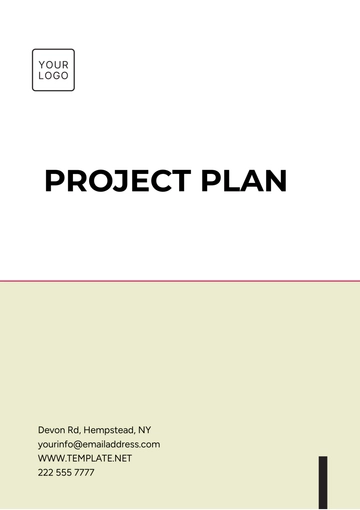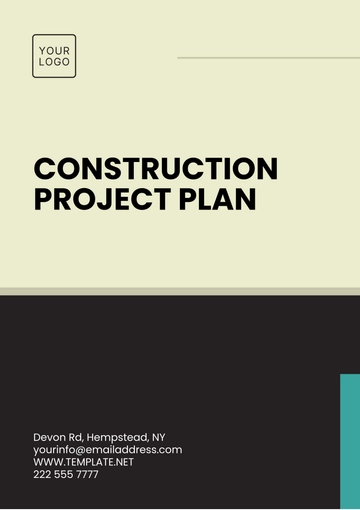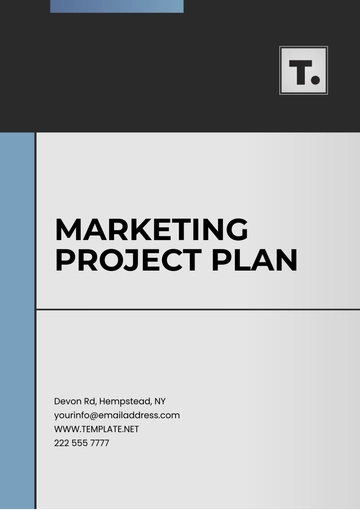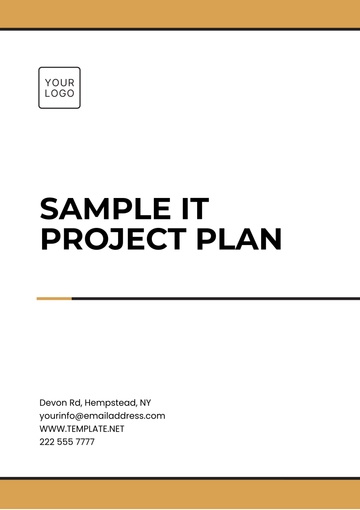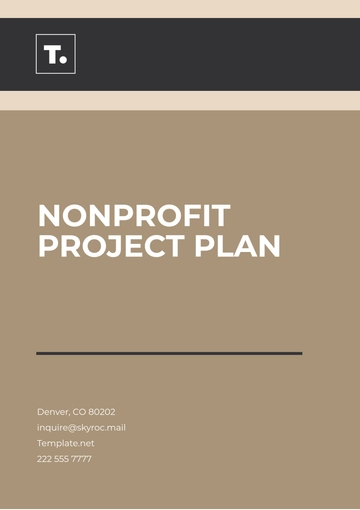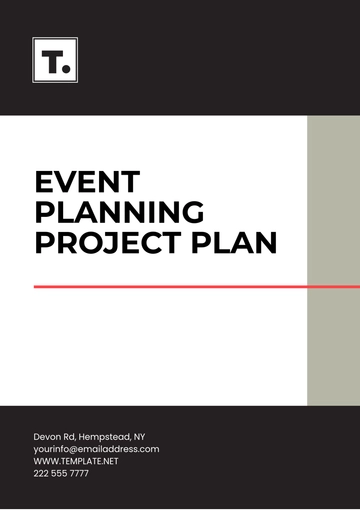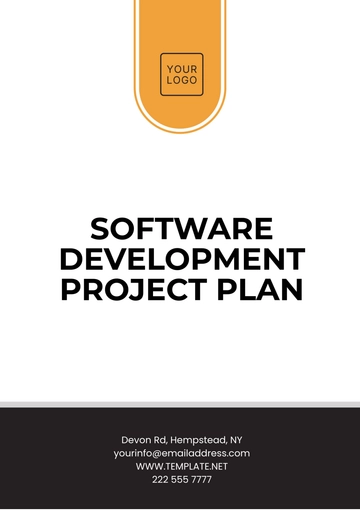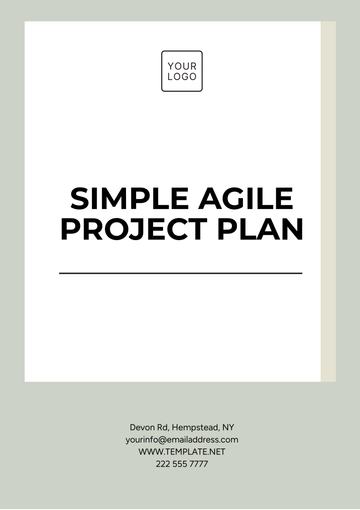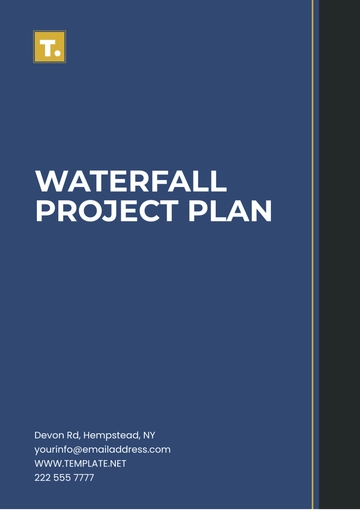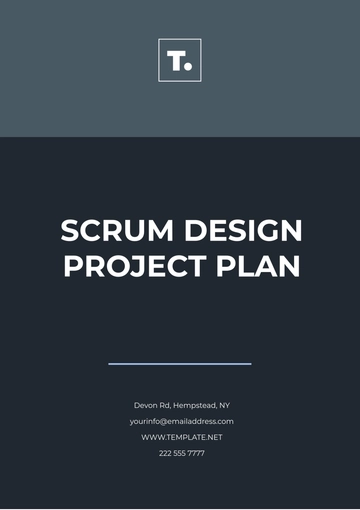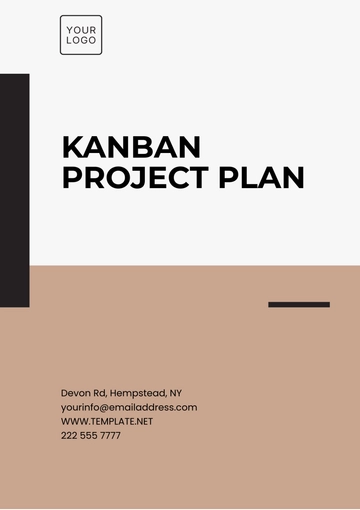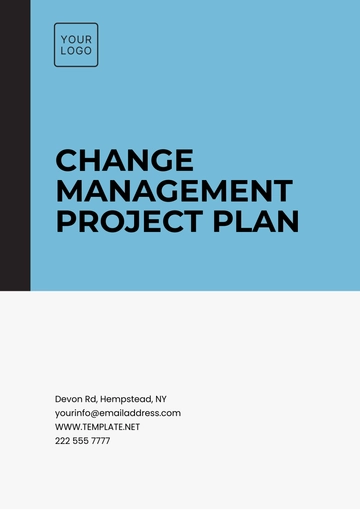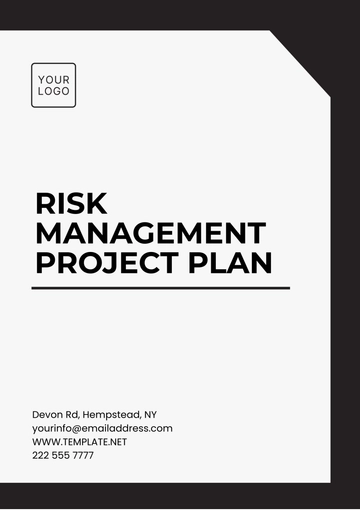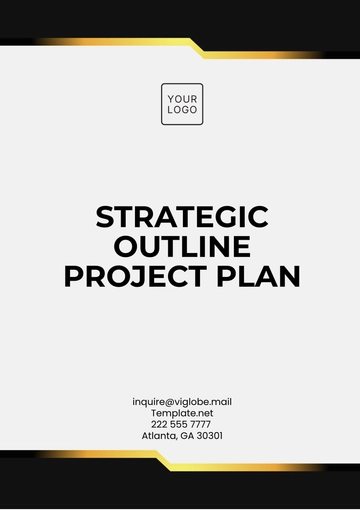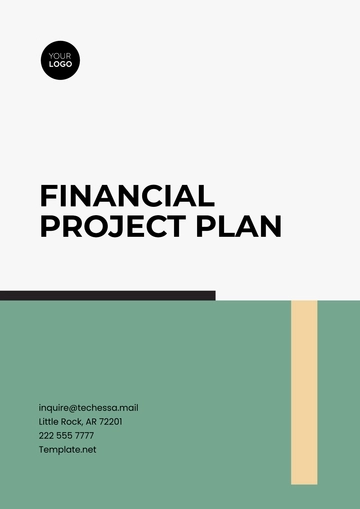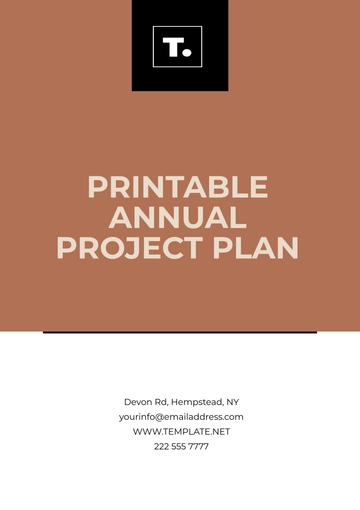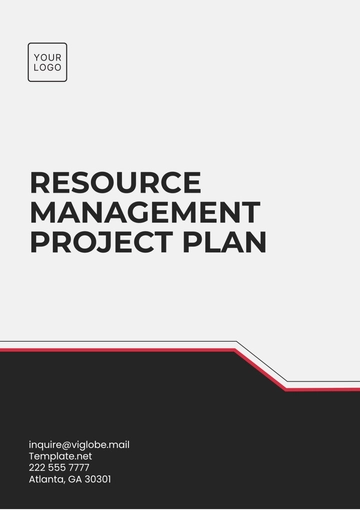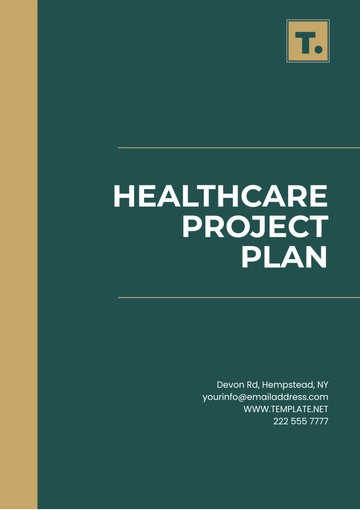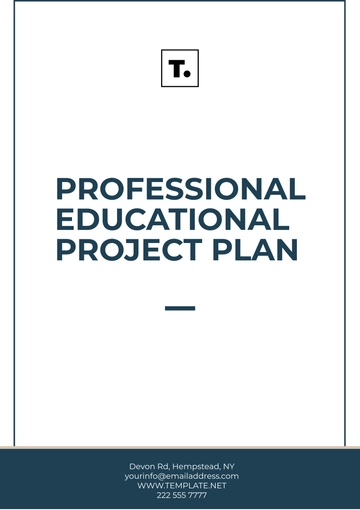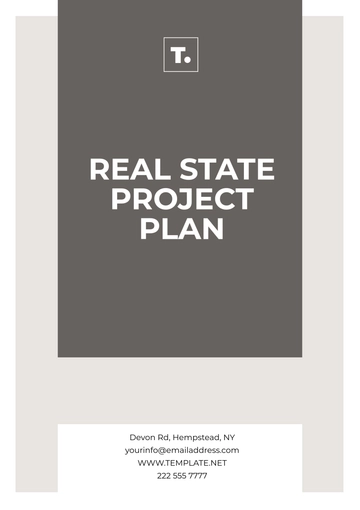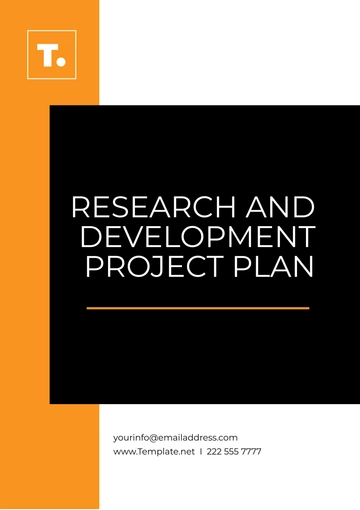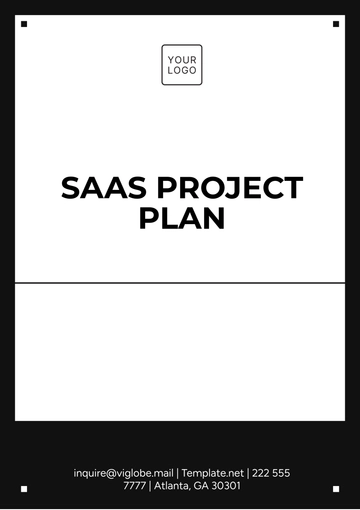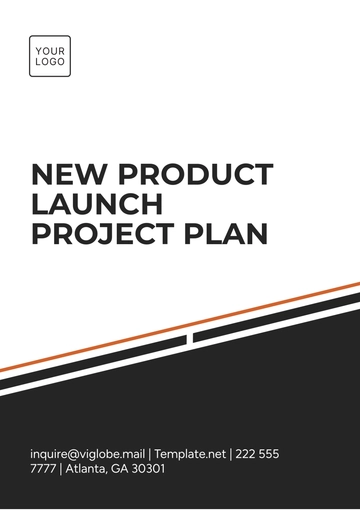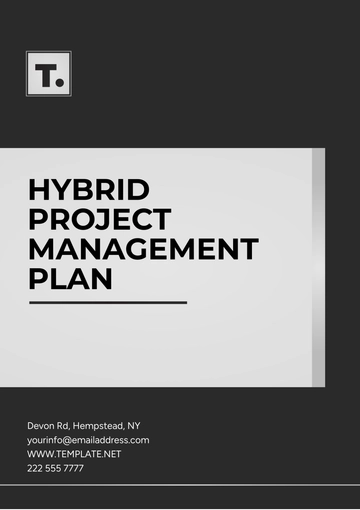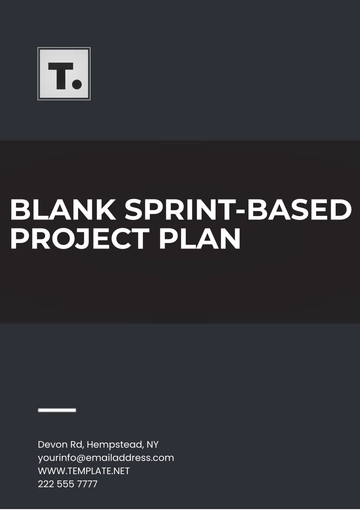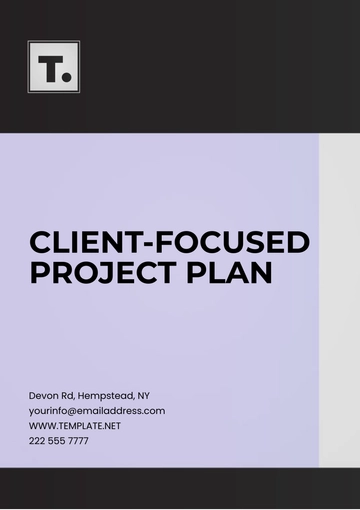Free Consulting Firm Project Plan
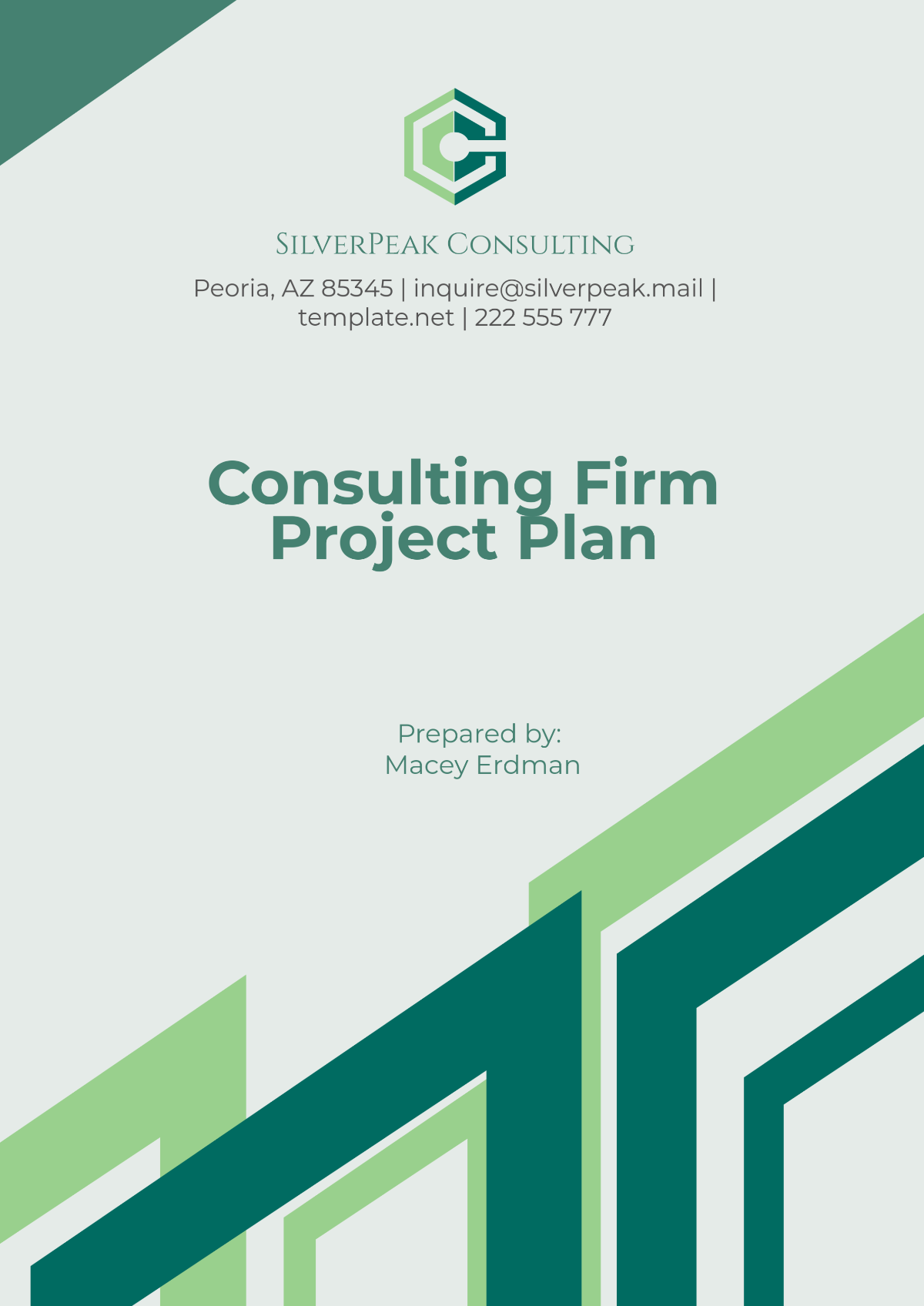
1. Executive Summary
1.1 Project Overview
[Your Company Name] Consulting Firm has been selected to partner with [Client Company Name] on a transformative project designed to optimize internal workflows, implement cutting-edge technology, and foster a more streamlined and sustainable operational structure. The project will address the client’s challenges, such as outdated processes, lack of integration between systems, and inefficiency in resource utilization. This project aims to help [Client Company Name] improve its core business functions by introducing improved systems, tools, and strategies that enhance productivity, reduce operating costs, and improve overall service delivery. The work will span several months, beginning in [Month], [Year], and continuing through [Month], [Year]. At the end of this project, we anticipate significant improvement in [Client Company Name]’s internal operations, with measurable gains in both cost savings and employee satisfaction.
1.2 Project Goals and Objectives
The primary goal of this project is to significantly enhance the operational efficiency of [Client Company Name]. Achieving this goal will require focusing on several key objectives, including:
Operational Efficiency: Streamlining processes and eliminating inefficiencies to reduce costs and improve the speed and quality of service delivery. Through careful analysis and design, the aim is to cut operational costs by at least [25%] in the first year.
Technology Integration: Implementing advanced software systems that integrate all functional areas of the business, improving both communication and data accessibility. The introduction of cloud-based platforms will simplify data storage, processing, and retrieval, making operations more fluid and less prone to errors.
Sustainability: Ensuring that any changes made during the project are not only effective but sustainable in the long run. This will be accomplished through regular monitoring, feedback loops, and continuous improvement processes.
Employee Engagement and Development: The success of any technology implementation or process overhaul depends on the active participation and buy-in of employees. The project will include a comprehensive training program aimed at enhancing employee skills and reducing resistance to change.
As part of the project, [Your Company Name] aims to reach the following measurable objectives:
Achieve a [25%] reduction in operational costs within the first [12 months] of the project.
Improve employee productivity by [30%] through the introduction of new tools and systems within [6 months].
Enhance customer satisfaction by [20%] within the first [12 months], measured through customer feedback surveys and performance reviews.
1.3 Scope of Work
The scope of this project covers several key areas critical to achieving the desired outcomes:
Analysis of Existing Workflows: We will conduct a thorough review of current workflows, identifying bottlenecks, inefficiencies, and areas that require improvement. This will involve interviews with key stakeholders, process mapping, and data collection.
Identification of Improvement Areas: Based on the analysis, we will prioritize areas for improvement. This includes automation of manual tasks, consolidation of fragmented systems, and eliminating redundant processes.
Technology Implementation: A major part of the project will involve integrating new technologies into the current infrastructure. This could include ERP systems, CRM platforms, and data management tools designed to improve overall operational efficiency.
Employee Training and Development: A significant aspect of the project is equipping employees with the skills they need to thrive in the new operational environment. This will include formal training sessions, online resources, and one-on-one coaching.
Post-Implementation Support: Following the completion of the primary tasks, the team will remain involved to provide ongoing support, address any issues, and make necessary adjustments based on feedback.
The scope explicitly excludes any changes to the company’s core product offerings or structural changes to the senior management team.
1.4 Deliverables
The following deliverables are expected to be completed by the end of the project:
Project Plan: A comprehensive, detailed project plan outlining all the phases, timelines, resources, and expected outcomes.
Process Mapping and Improvement Report: A detailed report documenting the analysis of current workflows, proposed improvements, and their expected benefits.
Technology Implementation Plan: A strategy for integrating new software and systems into the existing infrastructure, including timelines, milestones, and resource requirements.
Employee Training Program: A complete set of training materials, including manuals, video tutorials, and live training sessions aimed at increasing employee proficiency with the new systems.
Final Report: A conclusive report that summarizes the entire project, its successes, and any challenges faced, as well as providing recommendations for further improvements.
1.5 Timeline
The project will span from [Month], [Year] to [Month], [Year], broken into four distinct phases. Below is a detailed project timeline, broken down by phase:
Phase | Start Date | End Date | Duration |
|---|---|---|---|
Phase 1: Analysis and Planning | [Month], [Year] | [Month], [Year] | 3 months |
Phase 2: Technology Implementation | [Month], [Year] | [Month], [Year] | 4 months |
Phase 3: Training and Adoption | [Month], [Year] | [Month], [Year] | 2 months |
Phase 4: Post-Implementation Review | [Month], [Year] | [Month], [Year] | 3 months |
These phases will be closely monitored to ensure that the project progresses according to the established timeline. Regular check-ins and updates will be provided to stakeholders to ensure alignment with the goals.
1.6 Budget Estimate
The project budget is estimated at $[1,125,000], which will be allocated across the various phases as outlined below:
Item | Estimated Cost ($) |
|---|---|
Analysis and Planning | $250,000 |
Technology Implementation | $500,000 |
Employee Training and Support | $100,000 |
Project Management | $150,000 |
Miscellaneous Costs | $75,000 |
Contingency Fund | $50,000 |
Total Estimated Cost | $1,125,000 |
The budget has been developed with careful consideration of the resources required, including personnel, software, and any external vendor support. A contingency fund of $[$50,000] has also been set aside to address any unexpected costs or changes in the project scope.
2. Project Background
2.1 Industry Overview
The consulting industry is experiencing a period of rapid evolution, driven largely by the need for businesses to innovate and adapt to a fast-changing global environment. Increased automation, the adoption of artificial intelligence, and a focus on data-driven decision-making have transformed the consulting landscape. These trends have made it more critical than ever for companies to leverage external expertise in areas like process improvement, technology integration, and strategic growth planning. Consulting firms such as [Your Company Name] are uniquely positioned to offer innovative solutions that align with these global shifts, enabling businesses to stay ahead of the curve and achieve sustained success.
2.2 Problem Statement
[Client Company Name] has faced challenges in its operations due to outdated processes and ineffective use of technology. The lack of integration between core systems has led to inefficiencies, delays, and communication breakdowns. For example, employees spend an excessive amount of time manually entering data into disparate systems that do not communicate with each other, resulting in duplicated efforts and errors. Additionally, the company has struggled with keeping up with competitors who have already adopted more efficient systems. These issues hinder the company’s ability to scale operations and maintain a competitive edge in the industry.
2.3 Need for the Project
To address these challenges, [Client Company Name] needs to modernize its internal processes and technology infrastructure. Without these changes, the company risks falling further behind in terms of operational effectiveness and market competitiveness. The lack of efficient workflows and technology is impacting the company’s bottom line, leading to increased operational costs, employee dissatisfaction, and potential customer service issues. This project is essential for the company’s long-term growth and sustainability.
3. Project Approach
3.1 Methodology
The methodology for this project will follow a phased approach, ensuring that each phase builds on the previous one for maximum effectiveness. The key phases are:
Initial Analysis and Planning: We begin by understanding the current state of operations, identifying bottlenecks, and establishing clear goals.
Design and Implementation: Next, we design and implement new systems and processes to address the inefficiencies identified during the analysis phase.
Training and Adoption: In this phase, we focus on ensuring that employees are properly equipped to use the new tools and systems.
Post-Implementation Review: Finally, we review the project's outcomes to measure success and make any necessary adjustments.
3.2 Tools and Technologies
[Your Company Name] will employ a variety of cutting-edge tools and technologies during this project, including:
Enterprise Resource Planning (ERP) software to streamline business processes and integrate core functions such as finance, HR, and supply chain management.
Customer Relationship Management (CRM) tools to enhance customer engagement and improve sales and service delivery.
Data Analytics Platforms to allow real-time data analysis and decision-making based on accurate insights.
3.3 Resource Allocation
A team of highly skilled professionals will be assigned to the project, each with specific roles and responsibilities. This will include project managers, business analysts, software developers, and trainers. A detailed resource allocation plan will be created to ensure that the necessary expertise is available at each phase of the project.
3.4 Risk Management
Potential risks include technological challenges, delays in employee adoption, and unanticipated costs. To mitigate these risks, [Your Company Name] will have contingency plans in place, including flexible timelines and a dedicated risk management team to address any challenges promptly.
4. Project Team and Stakeholders
4.1 Key Project Team Members
The project team will be led by a Senior Project Manager from [Your Company Name], supported by key members such as a Business Analyst, System Architect, Software Developer, and Training Lead. Each member of the team has extensive experience in their respective areas and will play an integral role in ensuring the success of the project.
4.2 Roles and Responsibilities
The roles and responsibilities for each key member of the project team are as follows:
Project Manager: Oversees the entire project, ensuring that it stays on track and within budget. The Project Manager will also handle stakeholder communication.
Business Analyst: Works with [Client Company Name] to understand existing processes and identify areas of improvement.
System Architect: Designs the technical architecture for the new systems and ensures that they are compatible with the company’s existing infrastructure.
Software Developer: Responsible for developing and integrating the new software systems.
Training Lead: Designs and delivers the training program to ensure that employees are well-equipped to use the new systems.
4.3 Stakeholder Identification and Engagement
The main stakeholders for this project include the senior management team of [Client Company Name], department heads, and employees who will be impacted by the changes. Regular updates will be provided to stakeholders through meetings and reports, ensuring that they are fully informed and engaged throughout the project.
5. Project Timeline
5.1 Project Phases
The project will be completed in four distinct phases, each critical to the successful implementation of the new systems and processes at [Client Company Name]. These phases are designed to build upon each other in a structured manner, ensuring that each element of the project is thoroughly planned, tested, and executed. Here are the phases and their key activities:
Phase 1: Analysis and Planning (Duration: [3 months])
In this phase, the project team will work closely with [Client Company Name] to perform a detailed analysis of existing workflows, systems, and technology. The goal is to identify inefficiencies, bottlenecks, and areas that require improvement. We will also engage with key stakeholders to understand their needs and gather feedback. The output of this phase will be a comprehensive report that outlines the current state of operations and provides a clear roadmap for the subsequent phases.
Phase 2: Technology Implementation (Duration: [4 months])
This phase will focus on the introduction of new tools and systems for automating processes, integrating systems, and enhancing data analysis. We will select the best-fit technologies based on the analysis from Phase 1, ensuring that the new systems align with [Client Company Name]’s long-term objectives. The team will work on system integration, customizing software solutions, and testing for functionality and performance.
Phase 3: Training and Adoption (Duration: [2 months])
The successful implementation of new systems relies heavily on employee buy-in and competence. In this phase, we will design and conduct a training program to ensure that all employees are well-versed in the new tools and processes. Training will include hands-on workshops, online courses, and continuous support to address any concerns during the transition period. We will also ensure that any resistance to change is addressed through effective communication and engagement strategies.
Phase 4: Post-Implementation Review (Duration: [3 months])
After the systems and processes are fully implemented, the final phase will focus on evaluating the success of the project. This phase includes monitoring the performance of new systems, gathering feedback from employees and stakeholders, and assessing whether the project objectives have been met. Adjustments will be made where necessary, and any minor issues will be resolved. A final report summarizing the results and lessons learned will be delivered to [Client Company Name].
5.2 Detailed Timeline and Milestones
The following table outlines the key milestones for each phase of the project, along with the expected completion dates:
Phase | Milestone | Date | Duration |
|---|---|---|---|
Phase 1: Analysis and Planning | Initial Report Delivered | [Month], [Year] | 3 months |
Stakeholder Feedback Collection | [Month], [Year] | End of Month 1 | |
Phase 2: Technology Implementation | System Integration Completed | [Month], [Year] | 4 months |
System Testing and Feedback | [Month], [Year] | End of Month 3 | |
Phase 3: Training and Adoption | Employee Training Completed | [Month], [Year] | 2 months |
Full System Adoption Achieved | [Month], [Year] | End of Month 2 | |
Phase 4: Post-Implementation Review | Final Report and Feedback Delivered | [Month], [Year] | 3 months |
Project Close-Out | [Month], [Year] | End of Project |
6. Budget and Financial Plan
6.1 Cost Breakdown
The total project cost will be distributed across various activities and phases of the project. Below is a detailed breakdown of costs associated with each component:
Item | Estimated Cost ($) |
|---|---|
Analysis and Planning | $250,000 |
Technology Implementation | $500,000 |
Employee Training and Support | $100,000 |
Project Management | $150,000 |
Miscellaneous Costs | $50,000 |
Contingency Fund | $75,000 |
Total Estimated Cost | $1,125,000 |
Each item has been meticulously budgeted to ensure that the resources required for each phase are allocated appropriately. The contingency fund is designed to cover unforeseen expenses that may arise during the course of the project, ensuring that there are no disruptions.
6.2 Financial Risk Management
In order to manage potential financial risks, [Your Company Name] will implement several risk mitigation strategies, including:
Buffer for Unanticipated Costs: A contingency fund of $[75,000] has been set aside for unexpected issues, such as software customization costs or additional personnel requirements. Any expenses drawn from this fund will be reviewed and approved by [Client Company Name] before they are incurred.
Tracking of Expenses: A financial tracking system will be set up to monitor costs against the budget throughout the duration of the project. This will allow for any deviations to be identified early, and corrective actions can be taken to keep the project on track.
Vendor and Resource Management: We will carefully evaluate and negotiate contracts with any external vendors to ensure that costs remain within budget and deliverables are met on time.
6.3 Return on Investment (ROI)
The expected return on investment (ROI) for [Client Company Name] will be a direct result of improved operational efficiency and reduced costs. The following factors will contribute to the ROI:
Operational Efficiency Gains: By eliminating inefficiencies and automating manual processes, we anticipate a reduction in operating costs by [25%]. For example, a process currently costing $[500,000] annually could be reduced to $[375,000] with the new system.
Employee Productivity: With the implementation of more efficient systems, employee productivity is expected to increase by at least [30%], resulting in faster processing times, fewer errors, and reduced overtime.
Customer Satisfaction: With improved systems, customer response times will be shortened, leading to better customer satisfaction scores. We expect a [20%] increase in customer satisfaction ratings, leading to greater customer retention and new business opportunities.
The projected ROI for the project is estimated to be approximately $[500,000] within the first [12 months] of implementation, based on the savings and improvements outlined above.
7. Communication Plan
7.1 Internal Communication
Communication is key to the success of any project. [Your Company Name] will maintain clear, consistent communication with all team members through the following methods:
Weekly Team Meetings: These meetings will review progress, identify any issues, and ensure that everyone is aligned with the project goals. These will be conducted by the Project Manager and include all project team members.
Project Management Platform: A centralized platform will be used for task tracking, file sharing, and overall project coordination. This platform will ensure transparency and enable the team to monitor progress in real-time.
Email Updates: For smaller updates or changes, email communication will be used to keep everyone informed.
7.2 External Communication
External communication will involve keeping stakeholders informed on the project's progress. Regular reports will be provided, as follows:
Monthly Stakeholder Meetings: These meetings will involve presenting the project's status, any budget adjustments, and any key challenges or changes to the plan.
Quarterly Financial Reports: A comprehensive financial report will be sent to stakeholders to track spending, identify any deviations from the original budget, and adjust the financial strategy if necessary.
7.3 Reporting Structure
Weekly Internal Reports: These reports will be shared with the project team to ensure alignment and immediate problem-solving.
Monthly Stakeholder Reports: A detailed report for [Client Company Name]’s senior management and other key stakeholders will include financial summaries, progress reports, and any notable challenges.
Final Project Report: At the end of the project, a comprehensive report will be delivered to [Client Company Name], summarizing all the work completed, results achieved, lessons learned, and recommendations for continued improvement.
8. Quality Assurance and Monitoring
8.1 Quality Management Approach
At [Your Company Name], we adhere to a rigorous quality management approach to ensure that every aspect of the project meets the highest standards. This includes:
Regular Audits: Internal audits will be conducted to assess the quality of the deliverables at each phase. These audits will ensure that all requirements are met and any discrepancies are addressed early.
Stakeholder Feedback: We will actively seek feedback from key stakeholders, both internally and externally, to validate our approach and results.
Continuous Improvement: Lessons learned from each phase will be applied to the next, ensuring that the project continually improves and delivers high-quality outcomes.
8.2 Monitoring and Evaluation Methods
Progress will be tracked and evaluated based on predefined metrics, including:
Budget Adherence: We will monitor costs throughout the project to ensure that the project remains within the allocated budget.
Timeline Adherence: Regular checks will be performed to assess whether the project milestones are being met on schedule.
Deliverable Quality: Each deliverable will be reviewed for quality before it is approved by the project manager and stakeholders.
8.3 Key Performance Indicators (KPIs)
The success of the project will be measured using the following key performance indicators:
Cost Reduction: A reduction of [25%] in operating costs within the first [12 months].
Employee Productivity: An increase in productivity by at least [30%].
Customer Satisfaction: A [20%] increase in customer satisfaction ratings.
System Uptime: Ensuring that the new system achieves at least [99%] uptime during the first year.
9. Change Management Plan
9.1 Change Management Approach
Change management is a critical component of this project, as employees must adapt to new processes and systems. [Your Company Name] will implement a structured change management plan that includes:
Employee Involvement: Employees will be engaged from the very beginning of the project to understand the reasons for the change and how it will benefit them and the company.
Communication: Clear communication will be maintained to reduce uncertainty and address any concerns that arise.
Training and Support: Adequate training will be provided to ensure that employees feel confident in using the new systems, with continuous support available post-implementation.
9.2 Resistance Management
Resistance to change is natural, but we will manage this by:
Listening to Concerns: Creating feedback channels where employees can express their concerns and receive responses.
Positive Reinforcement: Celebrating milestones and successes to motivate employees and showcase the benefits of the changes.
10. Project Closure and Evaluation
10.1 Project Close-Out
At the conclusion of the project, a thorough close-out process will be followed:
Final Deliverables: All project deliverables will be finalized and handed over to [Client Company Name].
Evaluation: A post-project evaluation will be conducted to assess whether the project goals were achieved, identify areas for improvement, and document lessons learned.
10.2 Post-Project Support
Once the project is officially closed, post-project support will be available for an additional [6 months] to ensure that any residual issues are addressed, and that employees are supported as they adjust to the new systems.
10.3 Final Report
A final project report will be provided to [Client Company Name], detailing the following:
Outcomes: A summary of the project’s success, including any improvements in operational efficiency, employee productivity, and customer satisfaction.
Lessons Learned: Key takeaways that can inform future projects.
Recommendations: Suggestions for ongoing improvements and further optimizations.
- 100% Customizable, free editor
- Access 1 Million+ Templates, photo’s & graphics
- Download or share as a template
- Click and replace photos, graphics, text, backgrounds
- Resize, crop, AI write & more
- Access advanced editor
Organize and manage client projects with the Consulting Firm Project Plan Template from Template.net. This editable and customizable template includes sections for project scope, deliverables, and timelines. Adjust it in our Ai Editor Tool to ensure a smooth and efficient project execution process.
